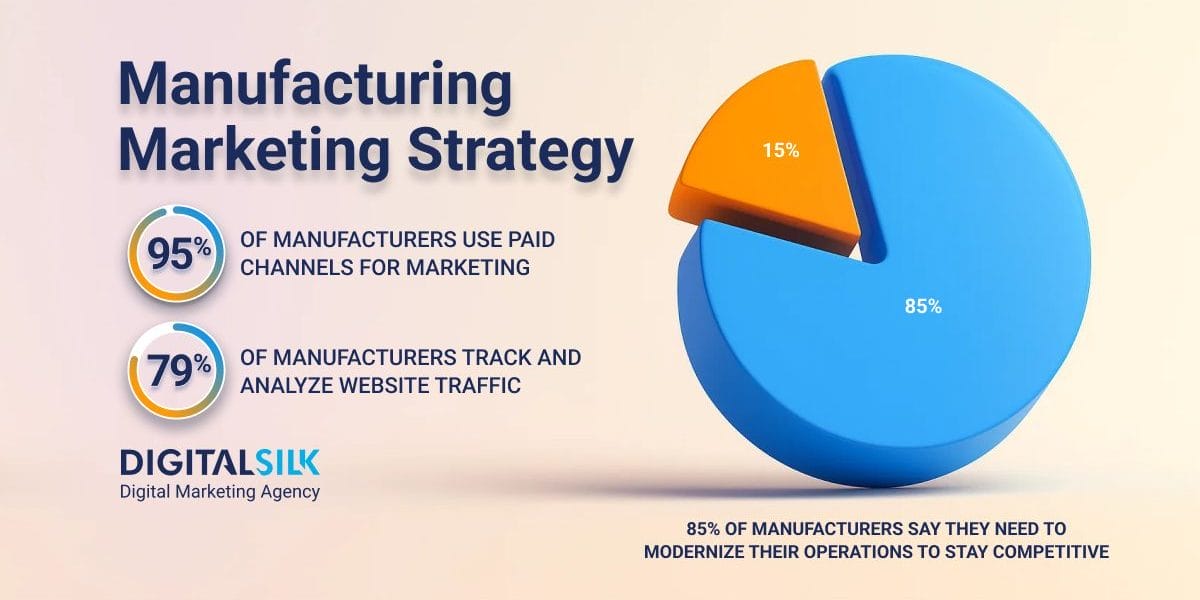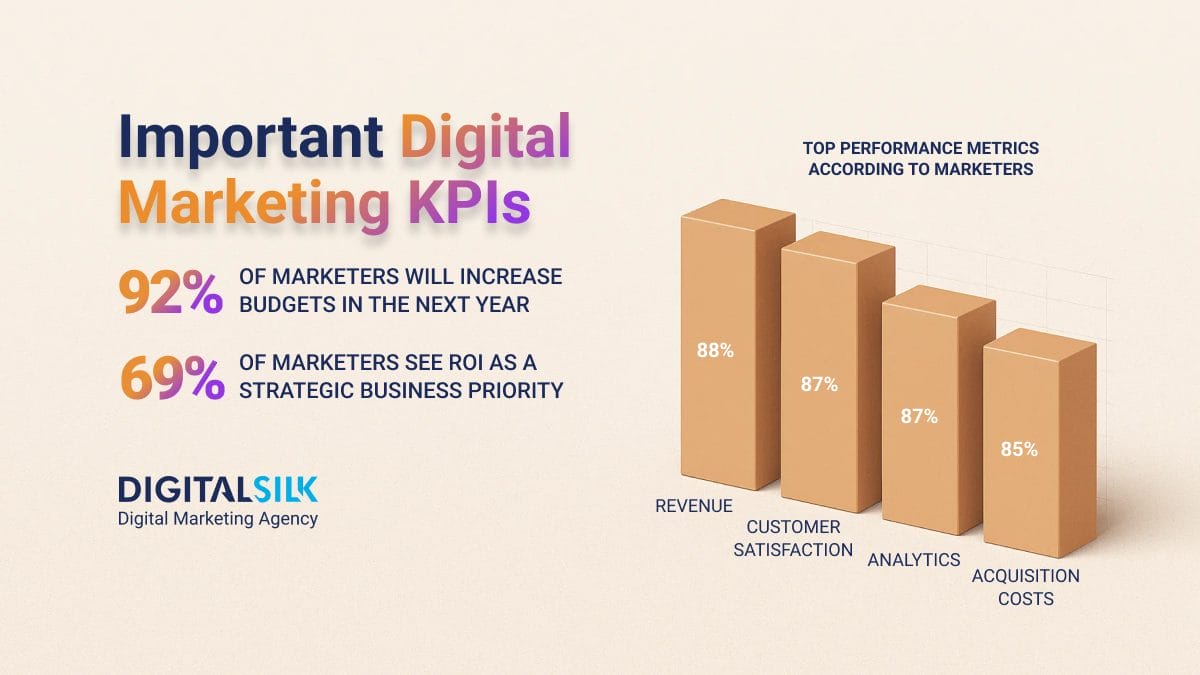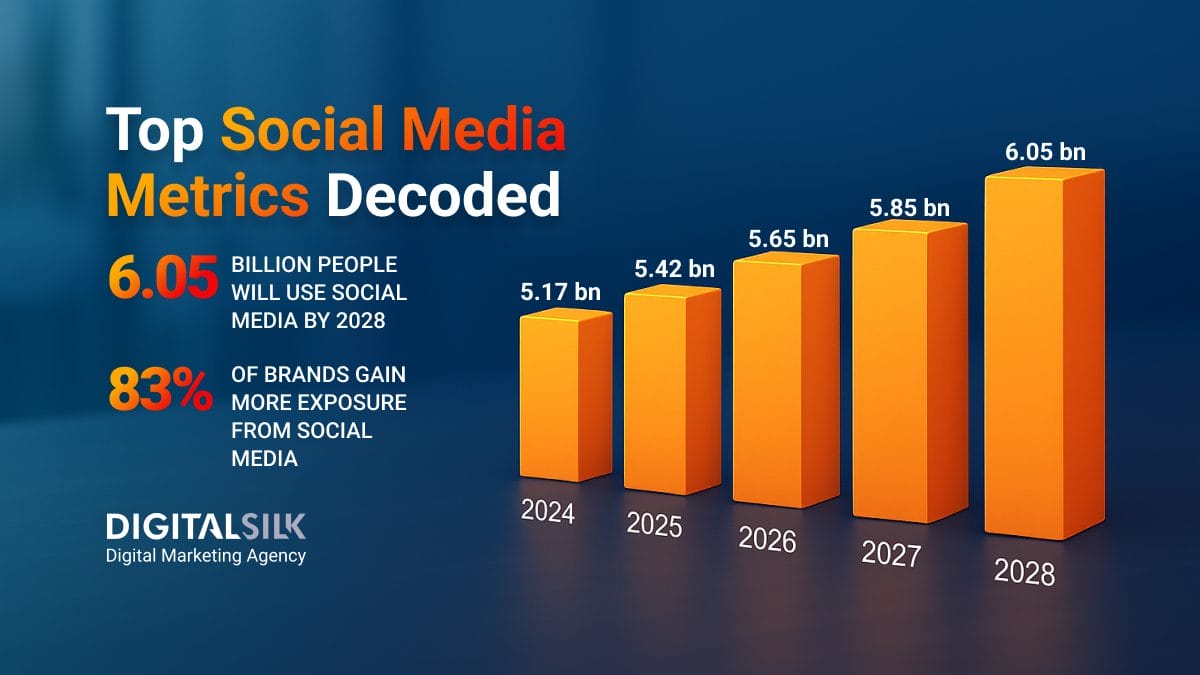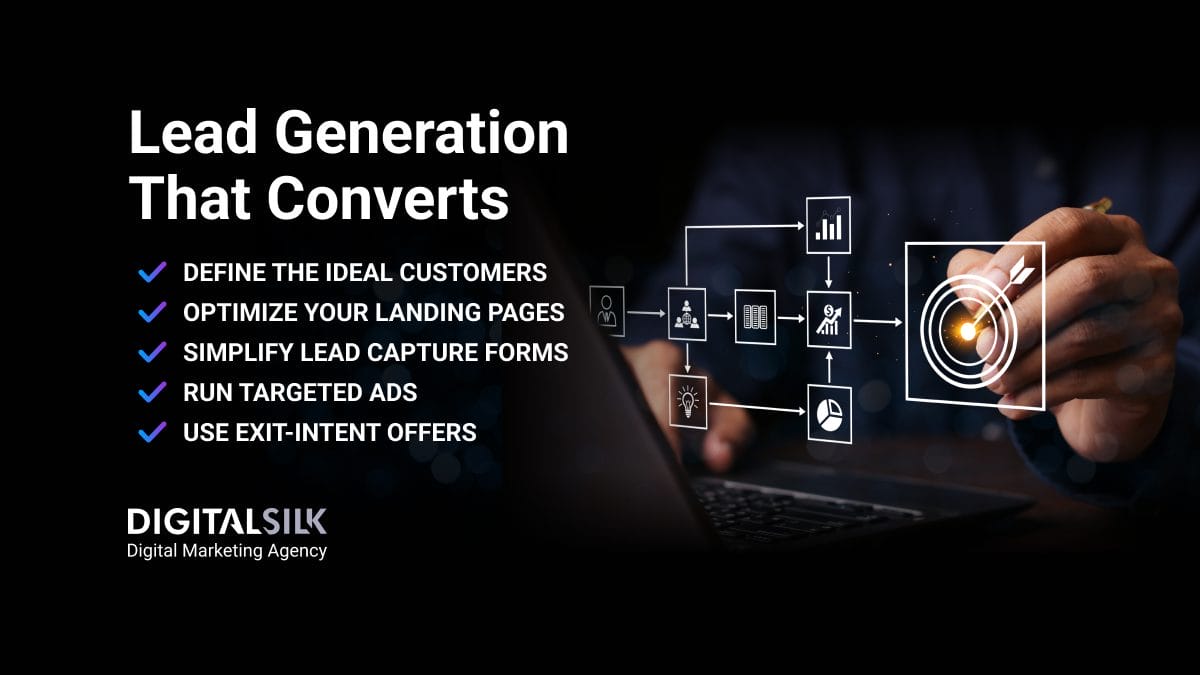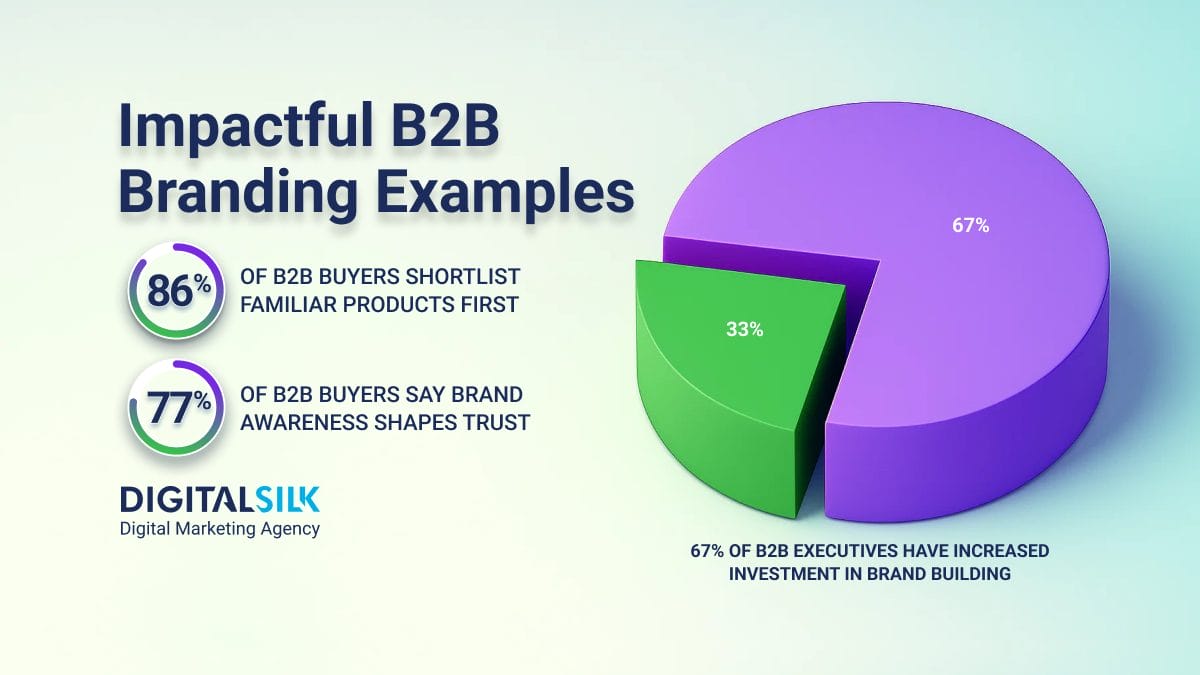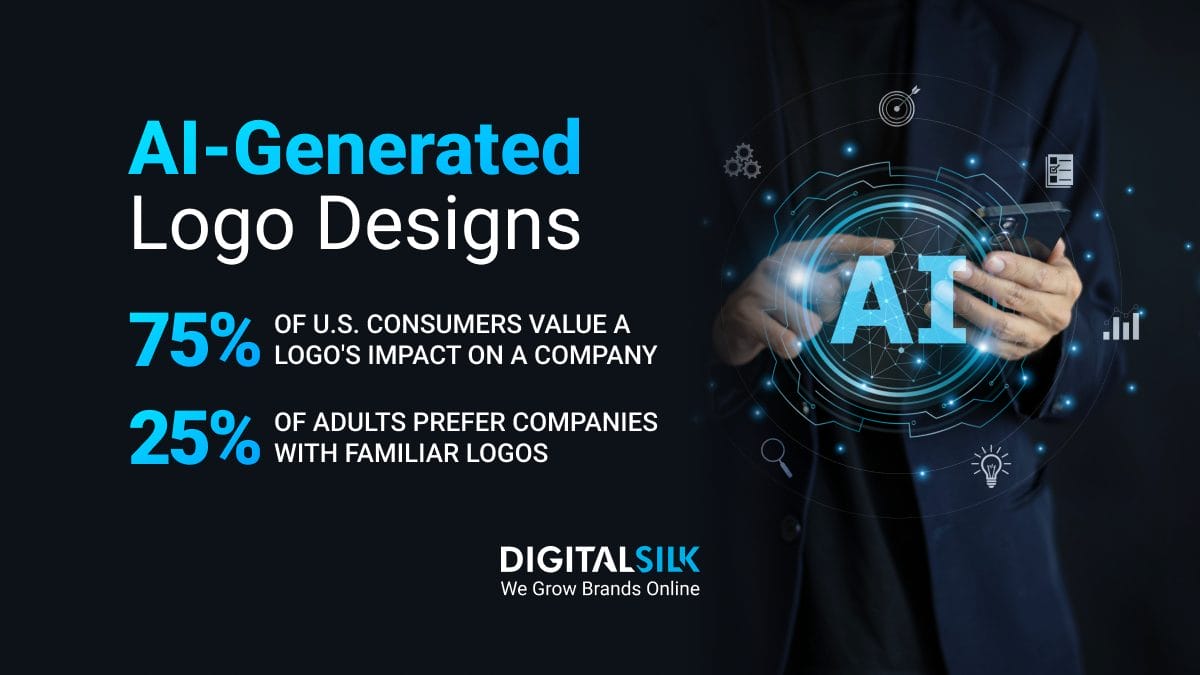Manufacturing Marketing Strategy: Key Highlights
-
Connection over volume: Personalized outreach, nurturing campaigns and event participation build credibility with the partners who matter most.
-
Visibility is a business asset: A well-optimized site and targeted outreach turn your expertise into measurable demand and lasting recognition.
-
Content drives technical trust: Educational articles, demos and case studies position your brand as a reliable source of industry insight, not just production.
U.S. manufacturing is becoming more selective and specialized.
In 2026, only about 230,000 manufacturers will remain active, yet global demand continues to rise. That means fewer players, but smarter ones.
Manufacturers that communicate their strengths clearly and consistently build lasting relationships with the right partners, distributors and decision-makers.
The guide below explores how to create a manufacturing marketing strategy that helps you stay relevant, trusted and positioned for growth.
How To Create A Marketing Strategy For Manufacturing
A digital marketing strategy for the manufacturing industry starts with understanding how complex products, long sales cycles and relationship-driven decisions shape buying behavior.
With manufacturing revenue expected to grow by 4.2% by the end of 2025, the potential for expansion is clear, but so is the need for strategies that capture that momentum.
The sections below introduce the key elements that define an effective and sustainable approach:
1. Optimize Your Website For SEO And Lead Conversion
Your website is often where buyers form their first impression of your company and decide whether to engage further.
With 79% of manufacturing professionals tracking web traffic and 63% tracking lead conversions, search engine visibility and website performance have become key factors in how potential clients evaluate suppliers.
Optimizing your site for search and conversion means creating a platform that attracts the right audience, answers their questions and guides them toward the desired action.
Key steps to improve SEO and lead generation:
- Target buyer intent: Identify the search terms your potential clients use and build pages that align with their pain points.
- Ensure mobile accessibility: With 61.5% of global internet traffic coming from mobile devices, your site should load quickly and display cohrrectly across all screens.
- Improve site speed: Website speed is among the top 20 ranking factors on Google, with the average site loading its main content in 1.3 seconds, so slow pages can quickly cost you visibility and leads.
- Simplify navigation: Make it easy for visitors to find product details, certifications and contact information.
- Refine calls to action: Use clear prompts that encourage visitors to request quotes, download capability sheets or contact your team.
- Track and adapt: Measure which pages generate the most qualified leads and adjust your content and structure accordingly.
One example of a marketing strategy for a manufacturing company can be seen in Caterpillar’s approach to SEO and content design.
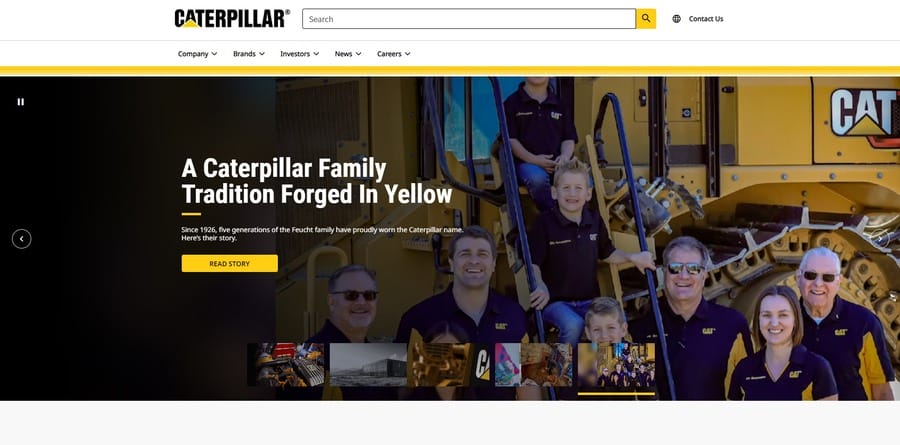
The company structures its website around how buyers search for heavy equipment, energy systems and construction solutions, using clear product categorization, technical resources and regional pages that support local markets.
This approach turns its website into a discovery and decision-making tool, helping potential clients find the exact information they need while strengthening Caterpillar’s visibility across global search results.
2. Invest In Paid Advertising
Paid advertising adds reach and timing to your marketing strategy for the manufacturing industry, helping your company appear when and where buyers are actively searching.
In the past year, 92% of manufacturing marketers used paid channels, with 70% focusing on search engine marketing (SEM) and pay-per-click (PPC) to capture demand at the right moment.
These campaigns create immediate visibility for your brand and turn genuine buyer interest into new business opportunities.
How to make paid advertising work for your manufacturing business:
- Use Google Ads, LinkedIn and industry directories: Google Ads reaches buyers actively searching for suppliers, while LinkedIn connects you with professionals researching solutions. Industry directories help you reach niche audiences looking for specialized manufacturing capabilities.
- Target by role and intent: Create campaigns for engineers, procurement managers and decision-makers, tailoring your message to each group’s priorities and stage in the buying process.
- Choose the right keywords: Focus on high-intent search terms related to your products, materials or services, such as “CNC machining services near me” or “custom metal fabrication for automotive parts”, to attract serious inquiries rather than casual clicks.
- Optimize landing pages: Each ad should lead to a page that matches the buyer’s intent and encourages a clear next step, such as requesting a quote or scheduling a consultation.
- Track and refine: Review performance data regularly to see which campaigns, audiences and ad types deliver the most qualified leads, then adjust accordingly.
For instance, searching for “stainless steel casting supplier” brings up paid ads from companies like Invest Cast Inc. and Sawbrook Steel Castings that appear higher than organic results.
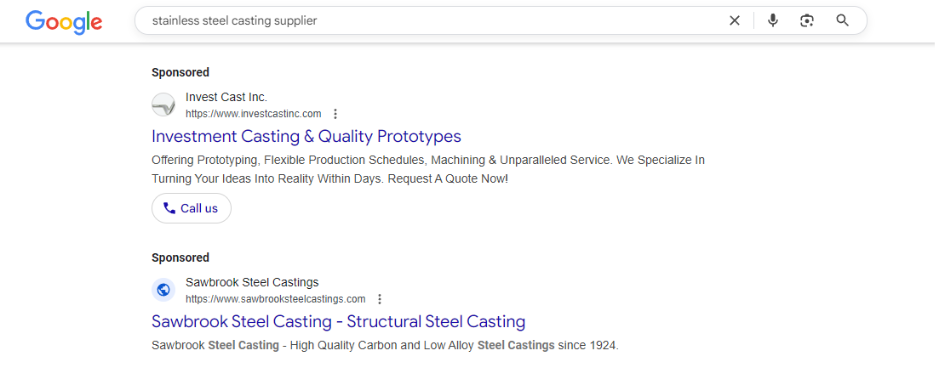
This placement gives them immediate visibility with engineers and procurement managers who are ready to make purchasing decisions.
It highlights how paid advertising can position your company ahead of competitors at the exact moment potential buyers are evaluating options.
3. Create Engaging, Educational Content
In a marketing manufacturing strategy, the quality of your content often determines how effectively you connect with buyers who value expertise and insight.
Technical audiences want clear, useful information that helps them make data-driven decisions about complex products and services.
Yet 33% of marketers say creating high-quality content is their biggest challenge, showing how rare consistency and depth still are in this space.
How to create content that engages and informs:
- Explain complex processes clearly: Turn technical topics into practical insights that help your audience understand how your solutions work and why they matter.
- Use multiple formats: Combine articles, videos and infographics to reach buyers who learn and research in different ways.
- Incorporate product visuals and demos: Show your products in context, including how they operate, what problems they solve and how they compare to alternatives.
- Optimize for search: Use keywords tied to specific products or manufacturing processes to help your content appear in front of the right audience.
- Share customer stories: Case studies and testimonials show your expertise in action, giving potential buyers confidence in your capabilities.
- Maintain consistency: Publish content on a regular schedule to stay visible and relevant throughout long sales cycles.
High-quality, educational content turns your expertise into influence and helps your company stay top of mind as buyers move from research to purchase.
For instance, Digital Silk’s client AGS Devices uses its News and Insights section to educate a business-to-business audience that includes aerospace and healthcare manufacturers.
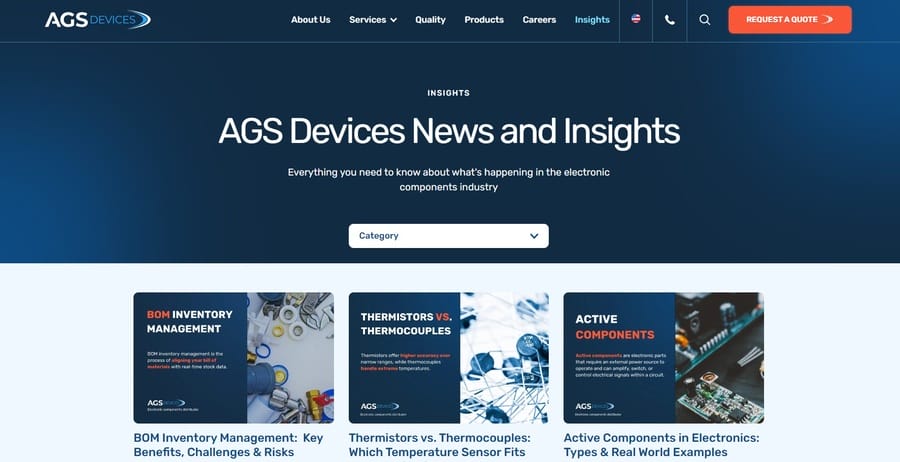
The company publishes detailed articles on relevant topics such as sensor technology, electronic components and inventory management, helping technical buyers stay informed and confident in their sourcing decisions.
4. Use Social Media Strategically
Social media gives your marketing strategy for your manufacturing business a direct way to reach decision-makers where they already spend their time.
Many professionals use these platforms daily to research, exchange ideas and explore solutions that shape their next partnerships.
With 70% of brands in the U.S. active on Facebook, the opportunity to connect, share expertise and build credibility within your industry is too valuable to overlook.
You can use social media effectively with these steps:
- Prioritize the right platforms: Use LinkedIn for professional engagement, Facebook for visibility and culture or YouTube for product demonstrations or educational videos.
- Tailor content to roles: Create posts that speak directly to engineers, procurement managers and executives, focusing on their real challenges and priorities.
- Share educational content: Post short videos, infographics and articles that clarify complex topics or illustrate real applications.
- Listen and adapt: Monitor industry discussions and feedback to refine your message and respond to audience needs.
- Encourage authentic interaction: Reply to comments, share client stories and build long-term relationships through genuine communication.
For instance, Synergy Manufacturing uses social media to showcase both its off-road vehicle parts in action and the process behind their production.
Through videos, customer features and factory highlights, the company uses technical manufacturing to create engaging content that connects directly with its audience.
5. Launch Email And Lead Nurture Campaigns
Email marketing helps your company maintain consistent, meaningful communication with buyers who take time to evaluate and decide.
It supports thoughtful communication that builds familiarity, trust and long-term relationships over time.
In B2C models, 69% of consumers say email is their preferred communication channel, showing its continued influence on engagement and retention.
As far as a B2B manufacturing company marketing strategy is concerned, 50% of marketers say email has the greatest impact within their multi-channel efforts.
Ways to improve your email performance:
- Segment your list: Group contacts by industry, buyer role or product interest so each message feels relevant and personal.
- Personalize your messaging: Use behavioral data to send timely and meaningful content.
- Automate follow-ups: Build workflows that respond to specific actions like quote requests or downloads.
- Share exclusive insights: Give subscribers early access to research findings, product innovations or expert perspectives they can’t find elsewhere.
- Test and refine: Experiment with subject lines, timing and layout to improve engagement and conversions.
Take Richman Chemical Solutions as an example, as the company uses a timed website popup to prompt users to sign up for their newsletter.
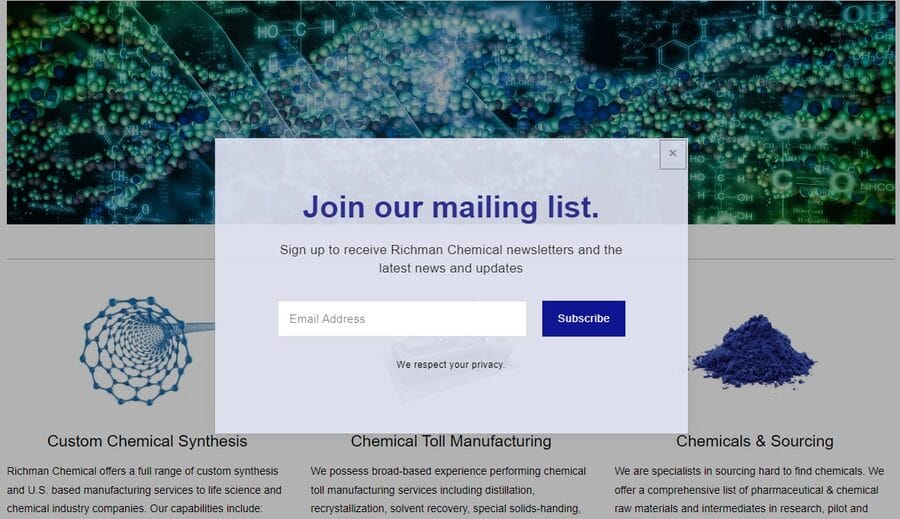
6. Integrate Interactive Product Tools And Samples
Interactive tools and product samples allow buyers to understand your solutions, make technical information easier to explore, help them visualize outcomes and evaluate fit before they commit.
In a marketing strategy for manufacturing companies, these tools bridge the gap between product data and real-world experience, creating engagement that supports both trust and conversion.
With 52.9% of manufacturers using marketing tools and systems, companies that connect digital interaction with hands-on experience are seeing improved customer alignment and faster decisions.
How you can apply this strategy in your digital marketing campaign:
- Use configurators or calculators: Let users adjust materials, dimensions or performance settings to see how your product aligns with their requirements.
- Offer free demos or trials: Provide samples or limited access so prospects can experience quality and functionality firsthand.
- Add interactive guides: Develop tools that explain specifications, costs or applications through visuals and easy navigation.
- Encourage quick action: Use time-sensitive offers or demo requests to motivate engagement while interest is high.
- Track engagement data: Monitor how users interact with your tools and samples to uncover buying intent and refine follow-up communication.
For example, Tesla uses its online configurator to transform the buying process into an interactive experience that feels personal and effortless.
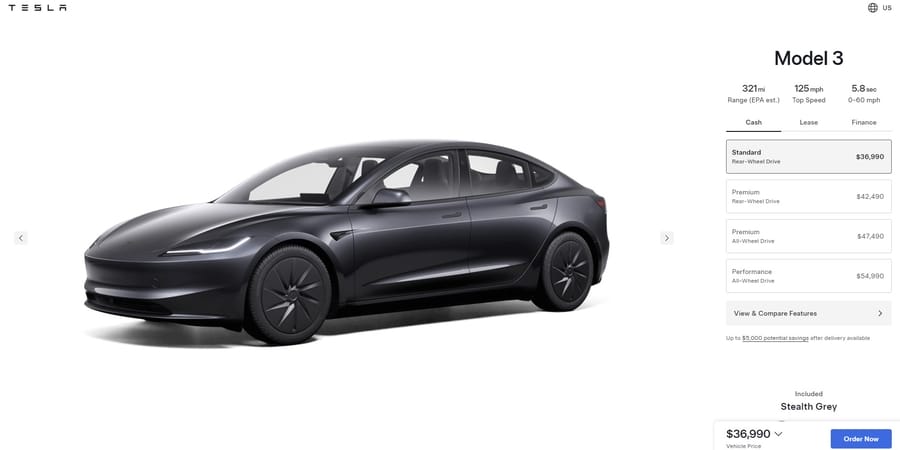
Visitors can adjust everything from model type and color to wheel design and interior finishes, seeing real-time updates to price and specifications.
This approach blends technology with customer engagement, allowing buyers to understand options visually and financially before making a purchase.
7. Implement Account-Based Marketing
Account-based marketing directs your attention to the clients that have the highest potential for long-term value.
Instead of pursuing volume, your team concentrates on high-value accounts with tailored outreach that speaks to their specific goals and challenges.
In a digital marketing strategy for your manufacturing company, this approach builds stronger alignment between marketing and sales while increasing the relevance of every interaction.
You can apply account-based marketing by:
- Identifying key accounts: Choose organizations that align with your ideal customer profile based on size, industry and purchase potential.
- Personalizing outreach: Create campaigns and content that speak directly to each account’s unique needs and decision-making structure.
- Coordinating across channels: Deliver consistent communication across email, social media, events and direct contact.
- Aligning sales and marketing: Encourage collaboration between teams so messaging and timing support a unified strategy.
- Nurturing long-term engagement: Maintain communication through tailored updates, invitations and insights that reinforce your value over time.
8. Participate In Industry Events And Trade Shows
Industry events and trade shows create opportunities to share ideas, exchange expertise and form relationships that drive meaningful growth.
They’re one of the most effective ways to meet potential buyers, partners and suppliers face to face while showcasing real solutions to real challenges.
90% of buyers say they are more receptive to outreach from companies that consistently produce high-quality thought leadership, which makes participation in these events a natural extension of that credibility.
How to make the most of industry events:
- Showcase your expertise: Take part in panel discussions, product demonstrations or technical sessions that highlight your innovation and experience.
- Host live Q&A sessions: Use open conversations to engage attendees and address common challenges in your sector.
- Create lasting resources: Turn your presentations into videos or downloadable summaries that continue to educate your audience after the event.
- Network with intent: Meet with decision-makers and collaborators to explore partnerships or future projects.
- Extend visibility online: Share event highlights and insights across your digital channels to reach audiences who couldn’t attend in person.
Among marketing manufacturing strategy examples, Siemens demonstrates how to use global events like Hannover Messe to strengthen thought leadership and visibility.
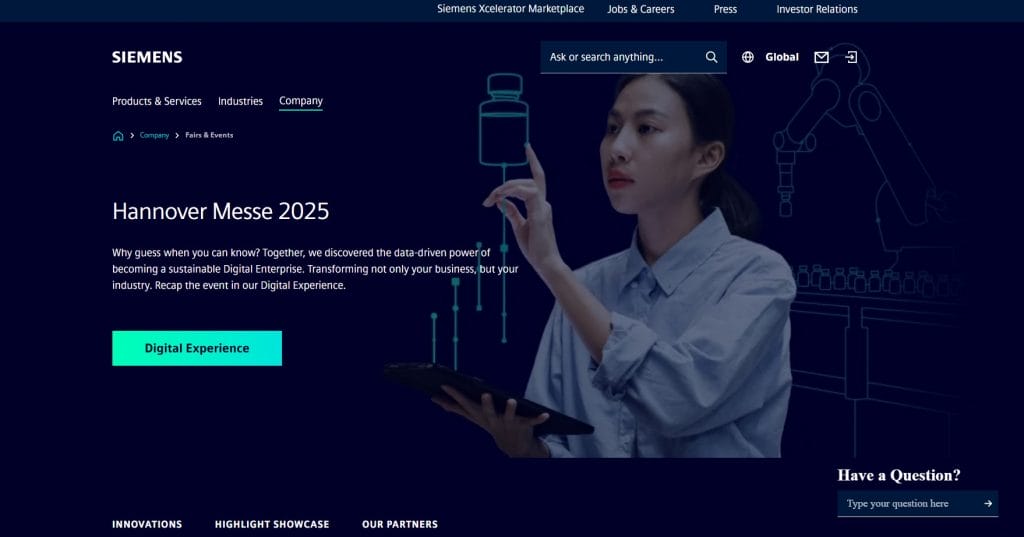
The company consistently presents new industrial technologies and leads discussions on automation, digital transformation and energy innovation.
By combining live demonstrations with expert panels and interactive showcases, Siemens turns its trade show participation into a platform for collaboration, brand trust and long-term business development.
9. Build A Rewards Or Referral Program
Reward and referral programs turn satisfied customers and partners into active promoters of your brand.
89% of users are willing to share personal data in exchange for loyalty points or rewards, which turns these programs into both a growth and insight opportunity.
In a marketing strategy for manufacturing companies, they help drive repeat business, expand visibility through trusted recommendations and deepen long-term relationships.
You can put this into action with these steps:
- Incentivize loyalty: Offer tiered rewards based on purchase frequency or order volume.
- Encourage referrals: Give customers or partners benefits for bringing in qualified leads.
- Include distributors and vendors: Extend incentives to supply chain partners to increase collaboration.
- Promote across channels: Announce programs through newsletters, social platforms and industry events.
- Refine through feedback: Review engagement and reward patterns to keep the program relevant and motivating.
An example of a well-executed rewards initiative comes from Hayward Pool Products, which launched its signature program to recognize and retain its professional partners.
The program allows distributors and contractors to earn points from every purchase and redeem them for products, experiences and exclusive perks.
By combining loyalty incentives with ongoing engagement, Hayward turns everyday transactions into lasting partnerships that drive repeat business and strengthen its position in the B2B market.
10. Use Analytics for Continuous Optimization
Analytics help every manufacturing marketing strategy evolve through data-driven performance and informed decision-making.
For 88% of marketers, revenue is the top key performance indicator, showing that data is increasingly used to connect marketing activity with tangible financial results.
Understanding which efforts drive engagement, conversions and profit allows your team to make smarter adjustments that keep marketing aligned with growth objectives.
Practical ways to integrate analytics into your strategy:
- Monitor performance: Track lead generation, engagement and conversion across channels.
- Align with sales: Share marketing data with sales teams to identify high-value prospects and shorten the buying cycle.
- Measure ROI: Evaluate which campaigns deliver the best returns and adjust budgets accordingly.
- Use predictive insights: Identify emerging buyer trends to guide product positioning and outreach.
- Refine continuously: Review the relevant data regularly to test new ideas and improve what’s already working.
Differences Between A B2C And B2b Manufacturing Marketing Strategy
While both B2B and B2C manufacturers aim to drive sales and build brand loyalty, the path they take to reach those goals looks very different.
| CATEGORY | B2B MANUFACTURING | B2C MANUFACTURING |
| Buying Motivation | Driven by efficiency, reliability and measurable returns on investment. | Influenced by emotion, personal satisfaction and convenience. |
| Decision Process | Involves multiple decision-makers, detailed evaluation and longer approval cycles. | Typically made by individuals or households with shorter consideration periods. |
| Content Approach | Focuses on data, case studies and technical proof of capability. | Centers around storytelling, brand identity and lifestyle benefits. |
| Sales Cycle | Longer and relationship-based, requiring consistent nurturing and education. | Shorter and transaction-focused, often ending in immediate purchase. |
| Primary Channels | Uses LinkedIn, trade publications, webinars and industry events to reach professional audiences. | Relies on social media, digital ads and influencer marketing to reach consumers. |
| Measurement Metrics | Success is tied to lead quality, conversion rates and long-term partnerships. | Performance is measured through brand awareness, engagement and sales volume. |
The audience, purchase behavior and decision-making process shape how marketing messages are built, delivered and measured.
Understanding these differences helps refine your approach and ensures that every campaign speaks directly to the right kind of buyer:
- Buying motivation: B2B buyers focus on efficiency, reliability and ROI, while B2C buyers are driven by emotion, convenience and personal value.
- Decision-making process: B2B purchases often involve multiple stakeholders and longer timelines, whereas B2C decisions are quicker and made by individuals.
- Content focus: B2B content emphasizes technical details, case studies and expertise, while B2C marketing relies on storytelling, lifestyle and emotional appeal.
- Sales cycle length: B2B cycles can stretch over months due to approvals and budgets, while B2C cycles tend to move from awareness to purchase in a single interaction.
- Communication channels: B2B marketing prioritizes email, LinkedIn and industry events, while B2C brands focus on social media, influencer marketing and direct advertising.
- Measurement of results: B2B success is measured in lead quality and long-term relationships, while B2C focuses on reach, engagement and immediate conversions.
How A Manufacturing Marketing Strategy Drives Growth
Growth in manufacturing depends on how effectively a company connects its expertise to the needs of the market.
A well-planned marketing strategy helps bridge that gap by identifying new opportunities, amplifying innovation and securing long-term loyalty.
- Market expansion: The global manufacturing market is projected to reach $944.6 billion by 2030, growing at a CAGR of 3.4% from 2024 to 2030. Marketing plays a key role by helping companies position themselves in emerging markets, identify growth opportunities and communicate their value to new audiences.
- Operational transformation: 85% of manufacturers say they need to transform their operations to stay competitive. Marketing supports this evolution by reinforcing digital adoption, improving customer communication and ensuring that modernization efforts are visible and understood.
- Customer alignment: By using analytics and feedback, marketing helps manufacturers understand what clients value most, shaping products and services that meet real demand.
- Innovation awareness: Marketing translates technical advancements into clear, accessible messaging that attracts partners and customers who value progress.
- Sustainable growth: Consistent marketing creates brand recognition, builds loyalty and connects every stage of the buyer journey to measurable business outcomes.
Future Outlook On Marketing For Manufacturing Companies
Marketing in manufacturing is moving toward greater transparency, relevance and collaboration.
New tools and changing buyer expectations are redefining how manufacturers communicate expertise, build credibility and maintain customer relationships:
- AI and predictive analytics for smarter targeting: More manufacturers are adopting AI to identify promising leads, analyze demand trends and guide outreach decisions. These insights help teams focus on opportunities that align with both market needs and sales potential.
- Augmented reality (AR) and virtual demos: Immersive product experiences are becoming part of the buyer journey, allowing customers to explore machinery, systems or setups in realistic environments. This approach shortens evaluation time and builds confidence in purchase decisions.
- Sustainability messaging and ESG storytelling: As environmental awareness grows, manufacturers are using Environmental, Social, and Governance (ESG) strategies to show their forward-thinking and revolutionary practices. Sharing genuine stories about process improvements and innovation helps attract like-minded partners and buyers.
- The rise of industrial influencers and niche online communities: Professionals are increasingly turning to trusted peers and technical forums for insights. Partnering with industry influencers and engaging with specialized online groups allows manufacturers to reach audiences that value authenticity and expertise.
Create A Manufacturing Marketing Strategy With Digital Silk
A modern manufacturing marketing strategy is one that evolves with changing buyer expectations and industry innovation.
Companies that communicate value with purpose and consistency are better positioned to compete and grow in a changing market.
Digital Silk’s marketing team helps manufacturers create tailored strategies that attract qualified leads, build authority and drive measurable growth.
As a highly-rated web design company, we provide:
- Digital marketing strategies
- SEO Services
- PPC management
- Social media marketing
- Custom branding strategies
- Web design for manufacturers
- Custom web design
Contact our team, call us at (800) 206-9413 or fill in the Request a Quote form below to schedule a consultation.
"*" indicates required fields


